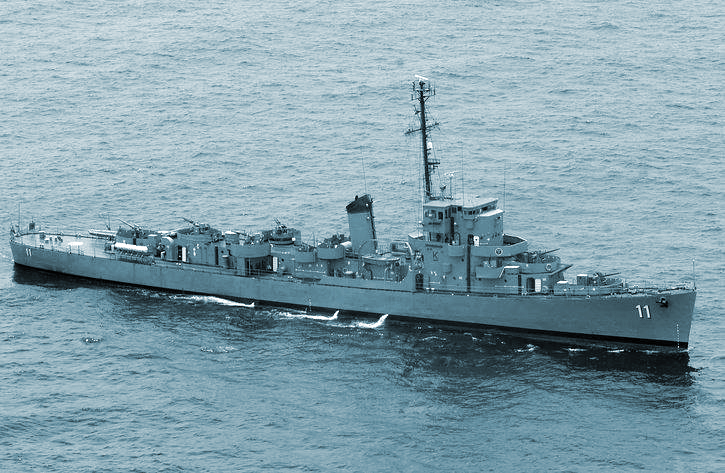On 15-March-2018, Navy Commander Alex Gianan, the last skipper of BRP Rajah Humabon, ordered his chief quartermaster to haul down the ship’s Commission Pennant to formally conclude her 38-year service in the Philippine Navy (PN). Philippine Fleet Commander RAdm Danilo Rodelas presided the Decommissioning Ceremony with Offshore Combat Force Commander Captain Caesar Bernard Valencia, Fleet senior officers, and 10 former ship captains in attendance.
This Cannon Class destroyer escort was named after Cebu Island’s ancestral Chieftain Rajah Humabon when Ferdinand Magellan sailed to the Philippines in 1521. Formerly designated USS Atherton (DE-169), in honor of US Navy LTJG John Mc Dougal Atherton who died during the Guadalcanal Campaign in 1942, she entered US naval service in August 1943 escorting troop and logistics convoys from American shores to Mediterranean ports. She distinguished herself as the first combatant to sink a German submarine, U-853, in the Atlantic using the Hedge Hog anti-submarine weapon in 1945.
After her decommissioning in 1946, the US transferred her to the Japanese Navy (renamed Hatsushi) where she served until 1975. The US later transferred her to the Philippine Navy in 1978. After undergoing massive refitting, she was commissioned in February 1980 with Captain Vicente Escala in command. PN classified her as a patrol frigate and became the Fleet’s flagship until 2015. The other ships belonging to the same class that PN acquired in 1967 and 1978, respectively, were BRP Datu Kalantiaw (PS76) and BRP Datu Sikatuna (PF5).
The PN deployed BRP Rajah Humabon (PF11) in various operational areas where sea state conditions suited her sea-keeping capability. Before PN replaced her main engines in 1996 she became a training ship for two years. She participated in several overseas missions (East Timor, Thailand, Vietnam, South Korea, etc.) and multilateral/bilateral naval exercises. She conducted numerous sovereignty patrols in the West Philippine Sea, Luzon Sea, and Sulu Sea. In early 2001, she provided naval gunfire support to army forces pursuing terrorists in Sulu Island.
While the ship would no longer be put to sea for operations, the PN may as well transform the vessel into a floating museum to form part of the country’s maritime history.
Among the skippers who became flag officers were:
- Vice Admirals Eduardo Ma. Santos, Emilio Marayag Jr., and Ruben Domingo;
- Rear Admirals Eriberto Varona, Manuel de Leon, Gilmer Batestil, Edgardo Tamayo, Isabelo Gador, Jaime Bernardino, Joseph Rustom Peña, Jose Renan Suarez, Leopoldo Alano, and Giovanni Carlo Bacordo; and
- Commodores Nicanor Hernandez, Leon Oribello, Edsel Lumawag, Salvador Esguerra, Paterno Labiano, Teddy Pan, Antonio Mendoza, Virgilio Garcia, Edwin Mackay, Nichols Driz, and Adeluis Bordado.
A ship decommissioning ceremony is an important part of naval tradition that highlights and supports the nation’s Armed Forces core values: honor, loyalty, valor, duty, and solidarity.
